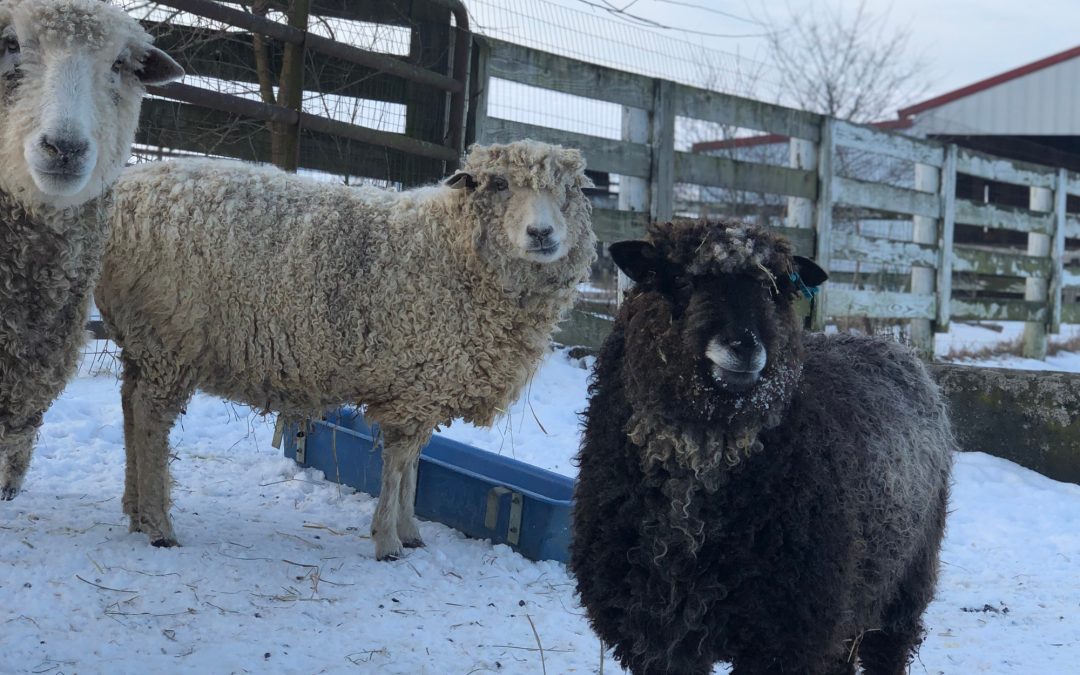lot of our production in anticipation of spring and starting a new cycle all over again. During this month we will finish processing our lambs and steers for the year, begin preparations for the spring maple syrup flow and lambing, and get fleeces out to be processed. Plans are also underway for spring planting.
Last year we sent wool to Batttenkill Fibers in New York to be made into hand woven blankets and lap robes. While it has been a long time in the making we are anxiously awaiting these any day. We also are skirting fleeces in preparation for taking to Blue Mountain Fibers in Harrisburg, PA. to be spun into yarn. If you have not done any hand spinning you may not realize the many steps involved in turning raw fleeces into yarn. First the fleece must be skirted which involves removing undesirable wool, any burrs, straw, manure, etc. We do this on the farm (and would be glad to show anyone who may be interested). Then the fleeces must be washed to remove dirt and excess lanolin. Next, they are carded on big toothed drums which opens up the fiber and separates any clumps. Pin drafting or combing straightens the fibers and aligns them parallel to each other so they can then be spun. First, they are spun into “singles” or one strand. While singles yarn can be used directly most fiber artists prefer to work with plied yarn. This involves twisting 2 or more strands of single ply together producing a more balanced and stronger yarn. For the blankets this processed yarn is then sent to local cottage weavers who will hand weave the blankets. We are having all our wool processed as natural color. Any dyeing we will do here on the farm.
Preparation of the hides to be tanned is also critical to ending up with a quality product. They must be collected promptly from the butcher and then hand trimmed and salted for several weeks to dry them out. We then get them to Bucks County Furs in Pa for tanning.
Meanwhile the rest of the sheep are mostly just hanging out. We may not like 9 degrees but they far prefer it to 90 degrees! We do actually hope for some dry cold weather to decrease some of the parasite larvae out there. We do also start planning for our lambing prep – primarily at this point making sure we get an early March shearing date. (More on lamb prep next month!)

